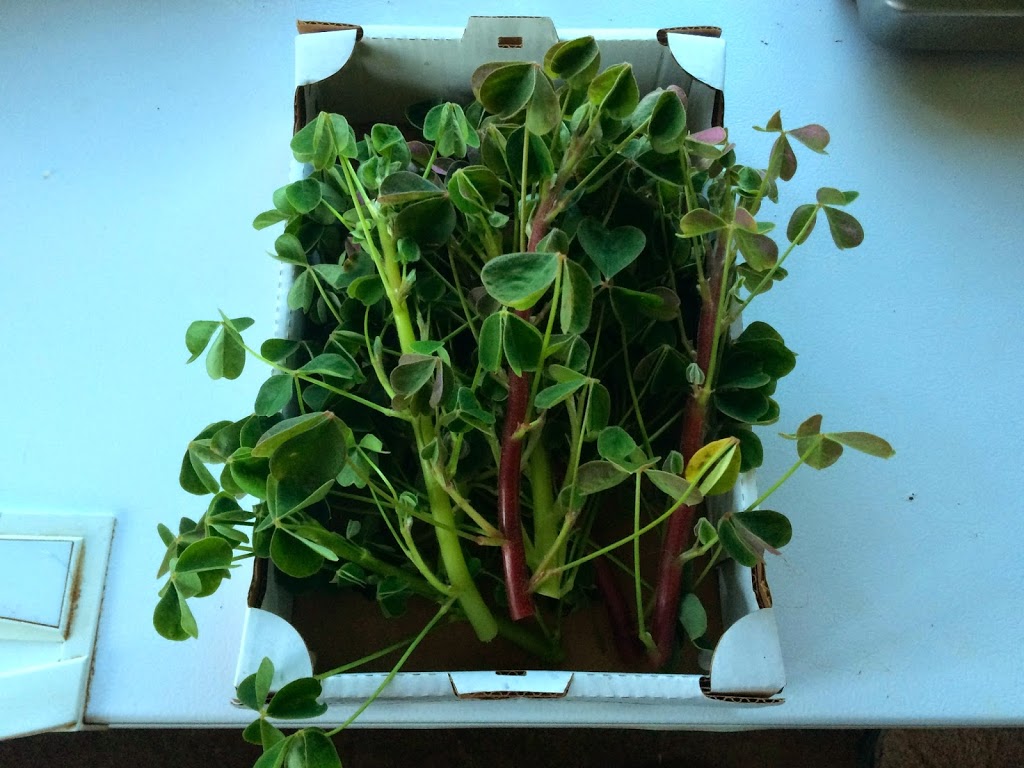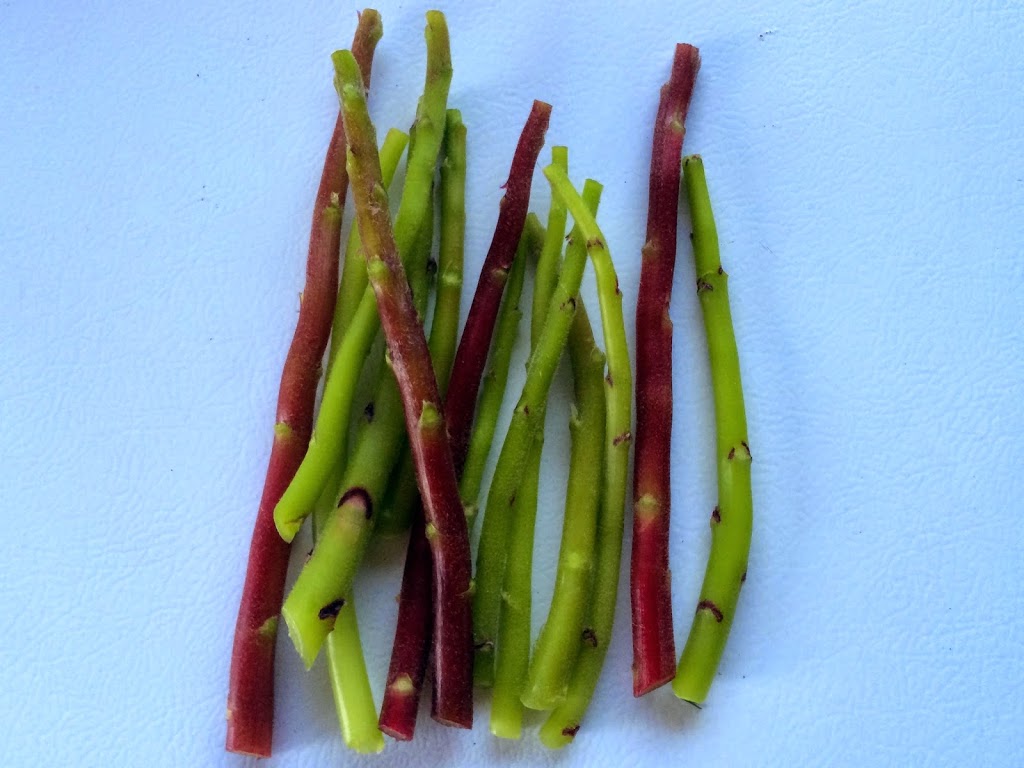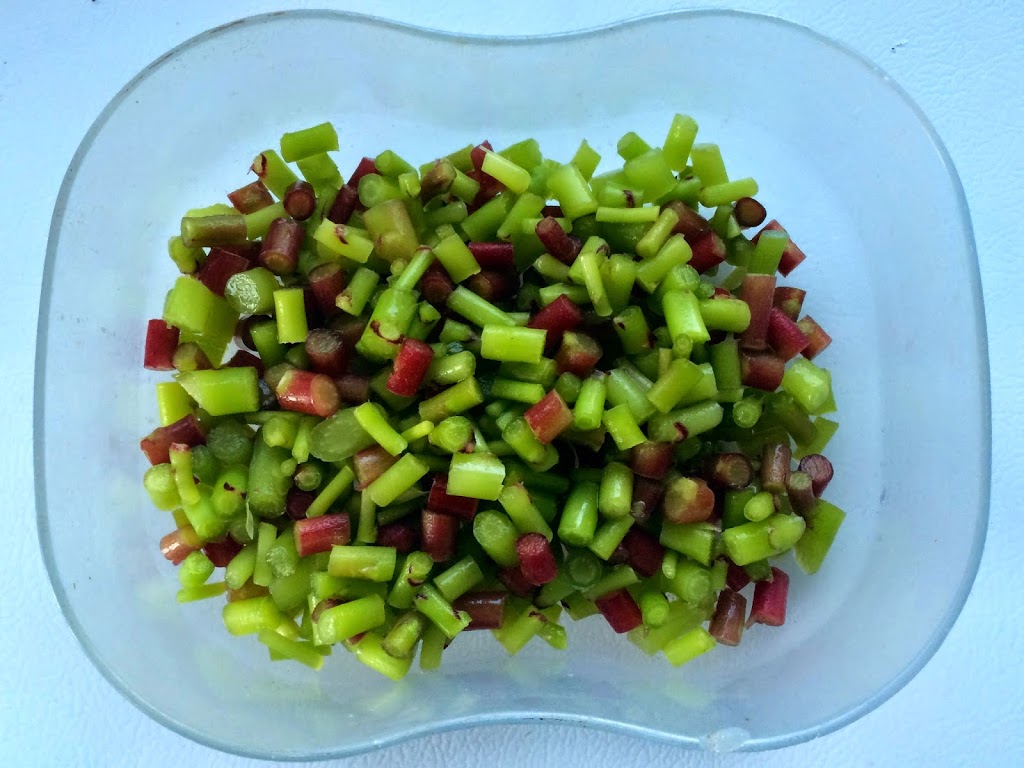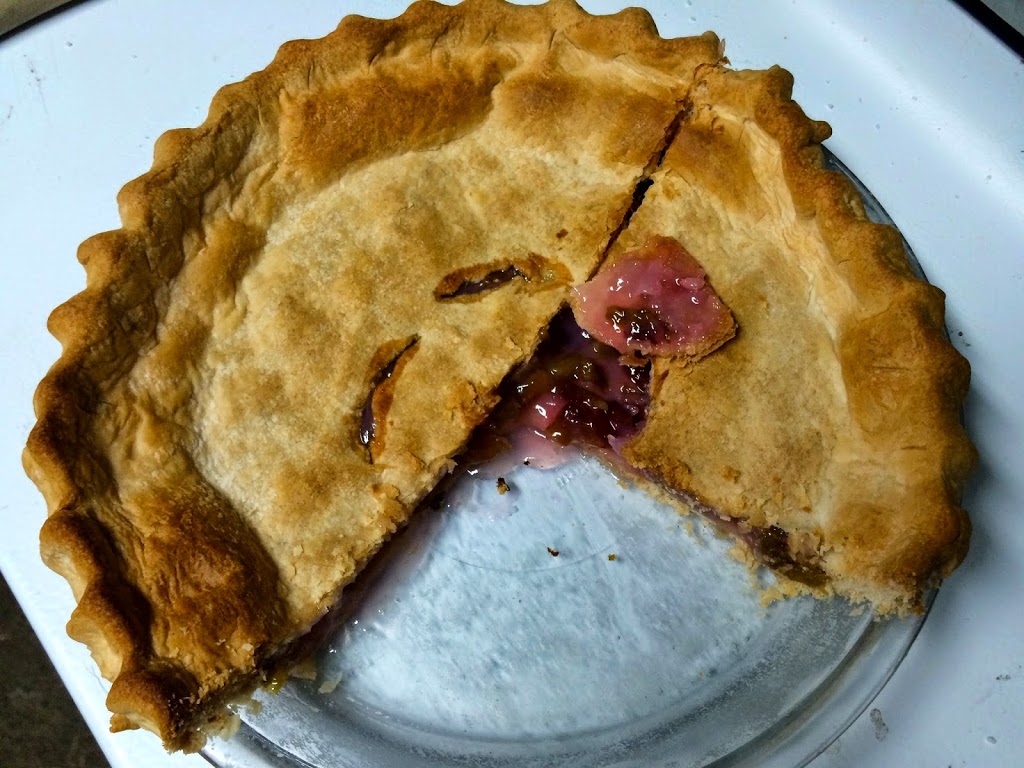Blog, oca (Oxalis tuberosa)
Oca: Pie
At one point while chewing on a piece of oca stem, it occurred to me that it tasted quite a bit like gooseberry. As a lover of gooseberry pie, my next thought was to wonder whether oca stems could be used to make a pie. Today, we put it to the test.
You might call it an acid test. This cullinary experiment is not entirely without risk, as oca is high in oxalic acid, the stems are not commonly eaten as far as I know, and I know of no measurements of the oxalic content of the stems, although at least once source indicates that they contain more than the tubers. I’ve eaten enough oca stem to know that it doesn’t seem to cause me any troubles, so I’m not too concerned, but there is always a little risk in trying new foods.
 |
| Oca stems stufficient to yield about a cup after trimming |
I collected a box of oca stems, trimmed them up, and washed them.
 |
| Trimmed oca stems. A mix of red and green seemed like a good choice. |
As usual, I underestimated how much to pick. The trimmed oca stems above yielded about a cup when cut into pieces. The pie recipe called for three cups, requiring a second trip.
 |
| Small pieces worked out nicely. You don’t notice any fibers at this size. |
I cut the stems into 1/3 to 1/2 inch sections – bite sized or roughly gooseberry sized since we were using a gooseberry pie recipe.
The recipe used the following ingredients for a nine inch pie:
3 cups of oca stem pieces
1 cup of white sugar
2 tablespoons tapioca
2 tablespoons corn starch
1/2 teaspoon salt
1 tablespoon water
All ingredients but the oca were brought to a boil, heat turned off, and the oca then mixed in before pouring into a store bought crust (having no idea if the results would be edible, we decided not to waste time making crust). 35 minutes in the oven at 400F.
 |
| I was surprised to see that the stem pieces retained their color (tubers don’t). They also turned the filling a bright pink color, not too different from gooseberries. |
I won’t win any awards for food photography, but the pie turned out to be pretty tasty. It is very much like a gooseberry pie. Not as tart as green gooseberries, but still pretty tart. Perhaps closer to a blend between a gooseberry and a rhubarb pie. I think next time I would add another cup of oca stem as the pie was a bit thin.
We both detected a little bit of mouth/throat tingle, probably due to oxalic acid. A similar experience is produced by rhubarb or sorrel. Nothing alarming and I have no reason to think that an oca pie is any more toxic than a rhubarb pie. It might not be a good idea to eat the whole pie in one sitting; moderation is always a good idea.
If you like your pies tart with a hint of danger, double-check your health insurance and give it a try.

Love this. I do like my pies tart with a hint of danger, so if our oca grows and thrives enough to give surplus stems, I’ll cook them in my grandma’s rhubarb custard pie recipe.